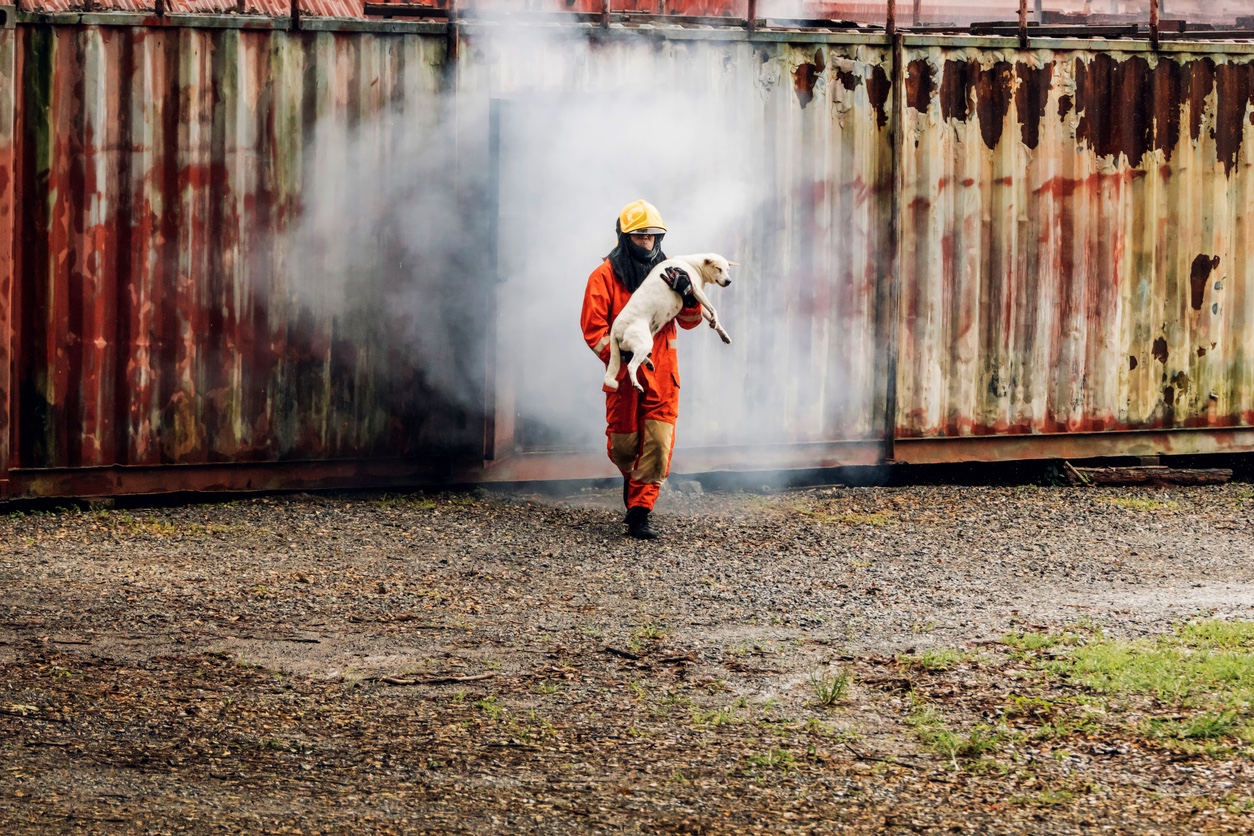One of the hardest things about Mother Nature is that we often don’t know when she will strike again. Spring Creek, Nevada, is known to have a wildfire risk. But whatever Mother Nature throws at us, it is best to be prepared for any emergency. For this reason, we are providing you with some tips for your pet disaster preparedness to keep your pets safe.
Pet Disaster Preparedness Evacuation Kit
Having a disaster evacuation kit for yourself and any other household members is very important. You also need a separate evacuation kit for your pet. Your evacuation kit should stay in a secure and easily accessible place. Having these things ready to go immediately can save precious minutes that could mean life or death. Your evacuation kit for your pet should include:
- Harnesses, leashes, or carriers are necessary to transport your pets safely and ensure that they cannot escape.
- Food, drinking water, bowls, cat litter/pan, and a manual can opener if your pet eats canned food.
- Copy of medical records stored in a waterproof container.
- A first aid kit.
- Current photos of you with your pet(s) in case they get lost. These can help you get reunited with your pet.
- Information about your pet:
- Name and number of your veterinarian, especially important if you have to board your pets or leave them with a foster.
- Feeding schedules
- Medical conditions
- Any behavior problems
- Pet beds and toys, if easily transportable.
- Know your emergency destination ahead of time. Shelters for humans often do not allow animals. However, motels in the area will probably accept them in an emergency. Call destinations in advance and find out which ones will accommodate you and your animals.
The CDC has a pet disaster kit checklist that you can print out and use as well, which you can find here.
Pet Disaster Preparedness Evacuation Plan
Having an exact evacuation plan is very important to ensure your safety and the safety of your pet. Here is a link from the American Red Cross with an Emergency Preparedness Checklist.
We recommend you make your list of steps to take if you find yourself in a disaster and need to evacuate. Something like:
- Gather your family and pets together.
- Put dogs on leashes and cats in carriers and make sure they are wearing identification.
- Grab your emergency evacuation kits.
- Get your car keys.
- Get medications (for you or your pet).
- Bring everything out to the car.
- Drive to the designated safe area.
The above list is just an example of a list you might make. The important part is that you have a plan and that you practice that plan. By practicing your emergency steps, you might find some omitted steps, or you need to tweak the sequence to save time.
Having a plan will also minimize panic. Panicking during an evacuation leads to making mistakes and potentially life-threatening choices.
The AVMA has an excellent free brochure that includes even more information about making a disaster plan with pets. You should read it and follow the steps that it lays out. You can find the flyer here.
Microchips
When a disaster strikes, the chances of a pet getting lost or separated from you go up immensely. Having your pet microchipped increases the chances of your pet being returned to you after the disaster has subsided. If you have not had your pet microchipped, you can schedule to bring them in for their microchip. The procedure takes seconds, and no anesthetic is required. We inject the chip between the shoulder blades, and it is relatively painless.
Summary
Being prepared for a disaster gives you more control to handle whatever situation you may find yourself facing. Here at Aspen Vet Clinic, we hope you never experience a disaster or evacuation; if one happens, though, we want you prepared. Please contact us if you have any questions about disaster preparation or need any veterinary service.
Sincerely,
Kathryn Moriarty
Aspen Veterinary Clinic

